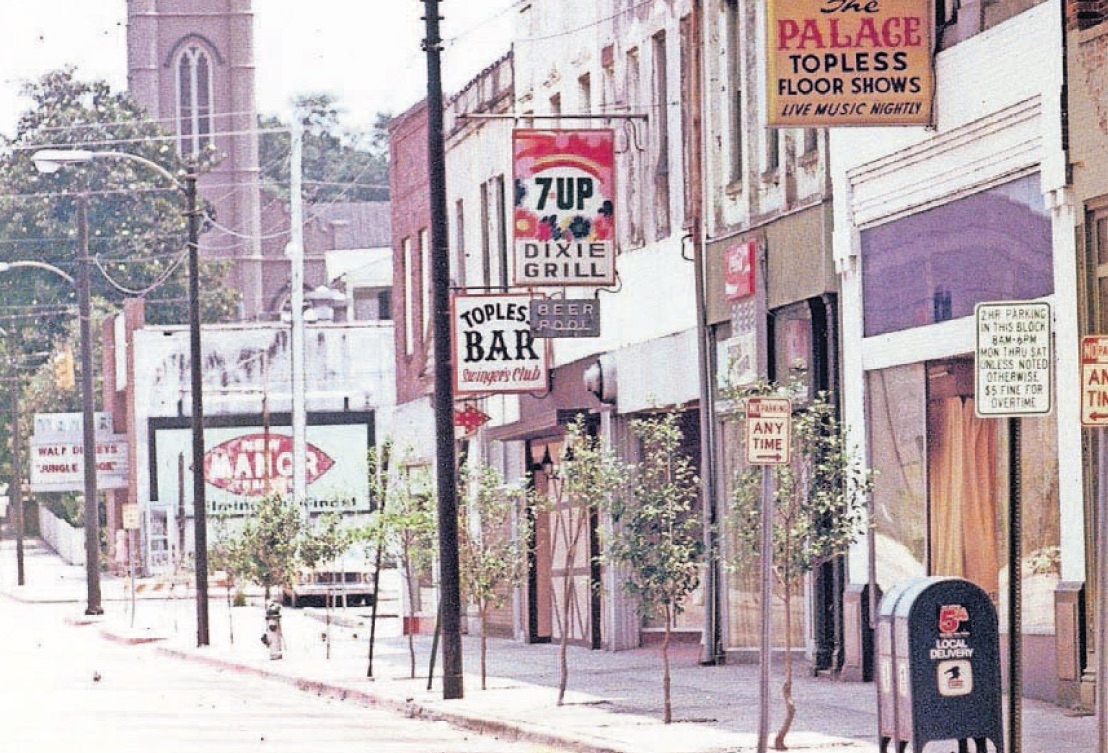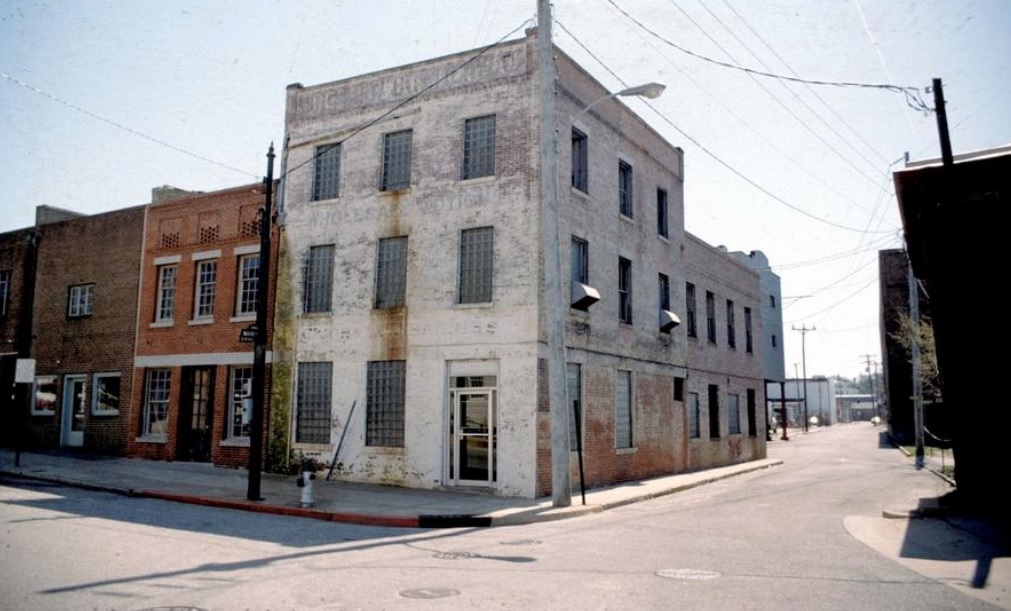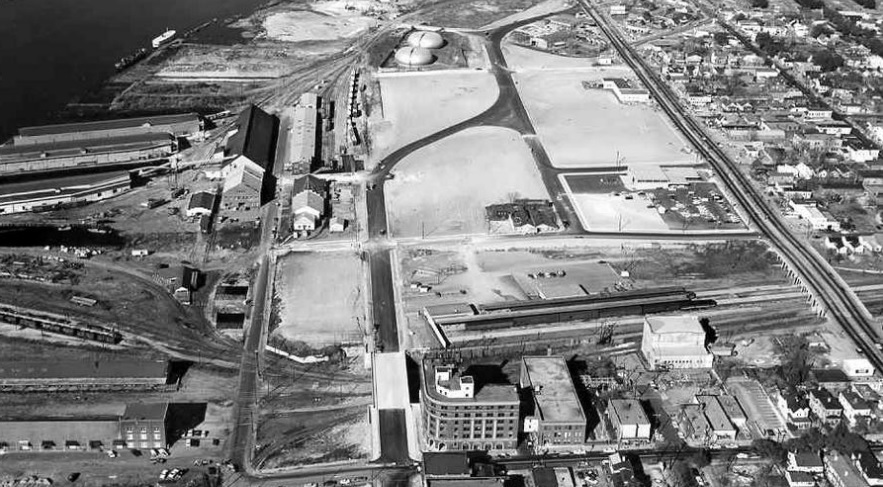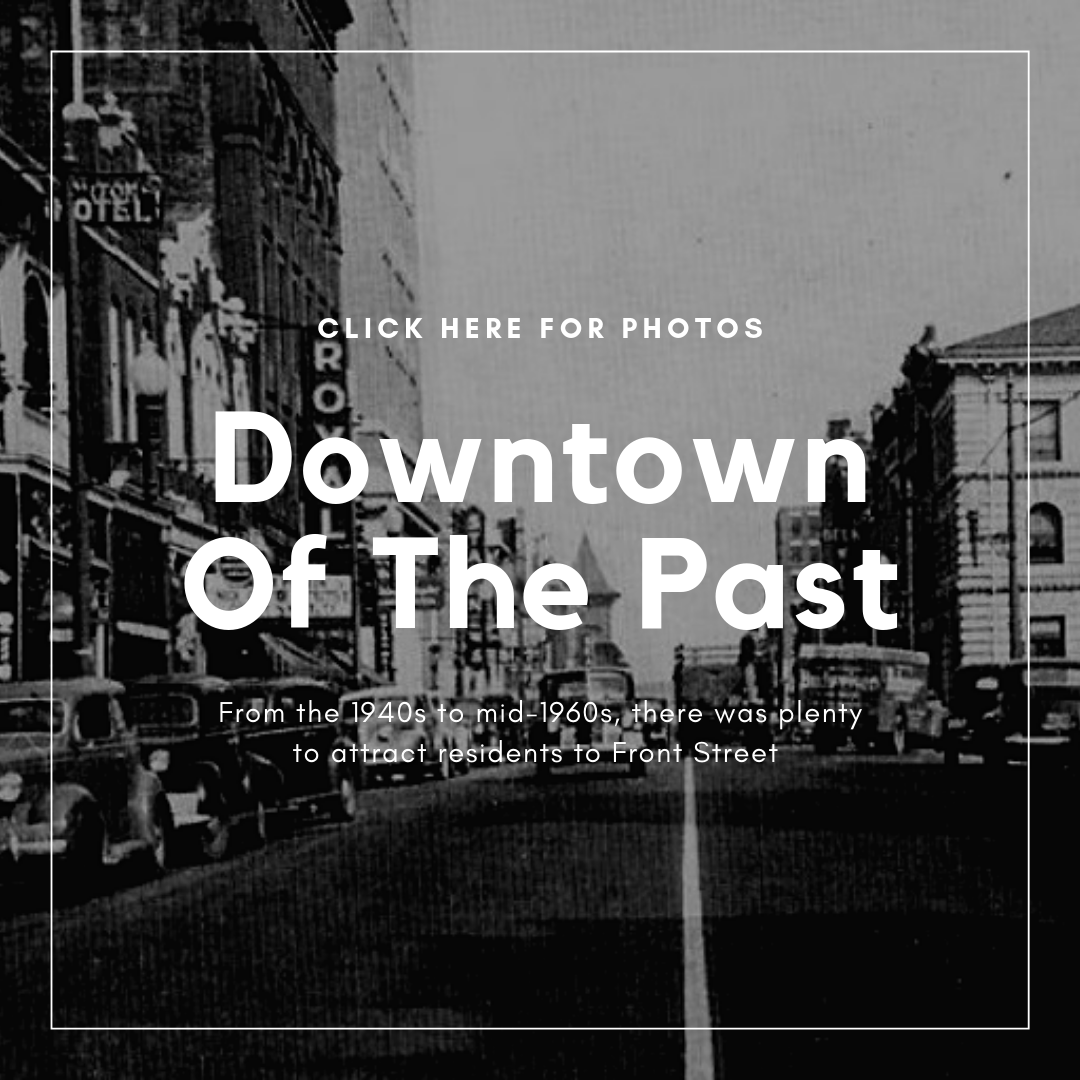
Part 1: How DARE led efforts to save, transform our dying downtown
It does my heart good to see the crowds of people in downtown Wilmington. But it’s not always been that way. Thanks to the efforts of many dedicated people, downtown has evolved into a vibrant place to live, work and play.
On the occasion of the 40th year of Wilmington Downtown, Inc. (formerly Downtown Area Revitalization Effort, Inc.), it’s a good time to look back at how we reached this level of success.
In the early 1970s, while leading the Greensboro United Arts Council, I worked on a variety of projects in that city’s downtown. That work opened my eyes to the need for downtown revitalization, through historic preservation and other means, as well.
When I returned to Wilmington -- my hometown -- in 1975, I began running campaigns for local politicians, among them Ben Halterman. In 1976, Ben, a city council candidate, upset incumbent Mayor Herbert Brand.
Based on my experience in Greensboro, I urged Mayor Halterman to push for revitalization in struggling downtown Wilmington. As the effort began to take shape, a research firm undertook an extensive study of downtown. The consultant recommended the establishment of a public/private partnership to address how urban sprawl and suburbanization had affected downtown Wilmington, which had seen its role as the commercial hub of the city wither.
Mayor Halterman asked me to chair this new committee, but my employer at the time, the N.C. State Ports Authority, would not allow me to accept the post. I continued to work with the mayor as an unpaid consultant, and urged him to choose Rick Willetts of Cooperative Savings and Loan to lead the group. In 1977, Wilmington’s Downtown Area Revitalization Effort, Inc. (DARE) was incorporated and I served as its registered agent.
We wanted DARE to be a true public/private partnership and to share in the expense of the operations, which meant fundraising was an early priority. The city and county agreed to participate on a one-third-each basis, and with DARE covering the other third, operations began in July 1978.
With Rick Willetts serving as president, DARE worked closely with the city's Planning Department, notably Sara Caldes and Roger Frankoff. Both played an important role in the organization's establishment, and Frankoff served for a short time as assistant executive director.
As with any fledgling organization, there were stumbles for DARE. When the first executive director didn’t work out, Willetts asked me to step in. I left my job as special assistant to the N.C. Secretary of Cultural Resources and went to work for DARE in the summer of 1978. Mary Gornto came on board as assistant director. (She would later become Wilmington’s city manager.)
With a decaying downtown, DARE had a huge challenge before it. In 1978 Belk and Penney’s moved to Independence Mall, meaning the major retail component of downtown was gone. (Sears had left earlier for Hanover Center). I once remarked “you can fire a cannon down Front Street at 5 p.m. on any day and not hit anyone.” I wasn’t exaggerating. With the major retailers gone, topless bars, adult book stores and prostitution flourished.
When local attorney Bill Shell became president of DARE, we worked with the city to tightly regulate the location and density of adult-entertainment businesses. By making strategic purchases of buildings, we were able to remove many of the businesses that had sullied downtown. In a year or so, we had effectively solved the problem.
About the same time DARE was formed, Joe Reaves and Mal Murray had opened the Cotton Exchange, which became an anchor for the north end of the main downtown business district. Soon after, Thomas Wright Jr. established Chandler’s Wharf on the south end. It started with one small shop selling sandwiches, and quickly blossomed into what it is today. Like Joe and Mal, Thomas Wright Jr. was a true downtown-revitalization pioneer. (He also signed banknotes that enabled DARE to buy the buildings housing topless bars and adult bookstores.)
An early part of DARE’s strategy was to promote the downtown riverfront for non-industrial uses. Part of that vision was to have four downtown festivals, one for each season. It took a few years, but I was able to sell the Azalea Festival on the idea of hosting a street fair after the annual downtown parade. DARE formed Old Wilmington Riverfront Celebration, Inc, created what would become Riverfest. Bill Shell had served as president of Residents of Old Wilmington, and drew on volunteers from that group to help run Riverfest. (Two other ideas, a downtown Christmas festival and a boat show, never materialized.)
As people in the area began to see the riverfront as an entertainment, recreation and tourist destination, DARE worked with the city to begin the Riverwalk, with construction starting in 1979 and the first section opening at the foot of Market Street. Realizing the unfulfilled potential of the riverfront, DARE and the city envisioned a Riverwalk spanning from bridge to bridge, which it essentially does today. (Completed in 2017, the 1.75-mile Riverwalk runs from Nun Street on the south to the Isabel Holmes bridge on the north. It is the city’s No. 1 tourist attraction.)

The coal-pile struggle
We all know the story of Santa leaving a lump of coal in the stocking of a naughty child. DARE had certainly not been naughty, but its vision was jeopardized in 1980, when downtown nearly became the recipient of a giant pile of coal. It would be the most critical issue DARE faced during my tenure.
In late 1980, Clean Coal Terminals of Ghent, Kentucky, announced plans to annually ship a million tons of coal to a site in downtown Wilmington. It would be dumped on the ground then eventually shipped overseas. The dump site was Almont Shipping Company, on the downtown northern riverfront, now the location of the Port City Marina, several restaurants, with new apartments and condominiums to come. Just to the north is the site of the city’s new riverfront park. It’s unlikely any of that would be happening today had the coal company gotten its way.
It was obvious to me and to many others that the coal site would severely undermine downtown revitalization efforts. My opposition, however, received a mixed reception from the DARE, Inc. board, which had members with business ties to Almont. Those board members tried to discourage my efforts to stop the coal dump.
I decided to keep a low profile on the issue, and called on the the help of my father, Gene Merritt Sr., a longtime local business owner who was well respected in both the civic and business communities. We formed the Wilmington Improvement Committee, and began to gather support from various groups interested in the environment. We also got backing from downtown business people who were worried that the coal depot would ruin their operations, notably tourist-oriented businesses.
Although Wilmington was a DARE partner, city council argued that the coal operation could be accommodated as long as “safety precautions” were maintained. It was a bad decision, as the city’s leaders caved in to certain business interests on the river and ignored the longterm ramifications of allowing a coal pile downtown.
Running out of good options to stop the coal site, I came across a state statute that allowed local ordinances to be amended by voters. Upon the petition of 10 percent of the number of people who had voted in the most-recent municipal election, a special election could be held to change the city code. We needed 600 signatures, and we got around 1,300. We could easily have gotten more, but time was running out -- the coal supporters were pushing hard to quickly close the deal.
On June 29, 1982, Wilmington voters decisively chose to amend the city’s zoning ordinance to ban coal piles in M-1 manufacturing areas. The vote was 3,304 to 1,876, not far from a 2-to-1 decision. I adamantly believe this wise, forward-thinking ultimately vote saved our riverfront and moved downtown in the direction of the what we enjoy today.
That episode, however, proved to be the first of two battles over coal. A decade later, we learned that Carolina Power & Light Co. (now Progress Energy) planned to bring a coal ship to downtown Wilmington to the same site. I was told that the city had changed the zoning back to its original designation.
My father and I hired a legal team and were able to get a restraining order that resulted in the coal ship weighing anchor at the WR-4 sea buoy while the case was argued. CP&L officials were infuriated, and threatened myself and my father with financial ruin, stating that they would charge us $75,000 for every day the ship was not allowed to dock at Almont.
We took our complaint to Superior Court, and it did not take long for one of our attorneys to learn that, by state law, city code amended by a vote of the people could be changed only by another vote of the people.
Victory was ours. For the second time we had saved downtown Wilmington from a coal pile and kept it moving in a better direction.
DARE, Inc. soon was recognized by the International Downtown Development Association as the prototype small-to-midsize town business model. We also ensured that downtown’s revitalization wasn’t just about redevelopment, but, rather, stressed historic preservation.
Our strategy gained the attention of Mary Means, a national leader in such work. As vice president of the National Trust for Historic Preservation, Means drew on the work of DARE to create the National Main Street program, which has helped 2,000 communities revive older town centers.
Instead of the strip clubs, adult bookstores, deteriorating buildings, departing businesses and a future that was going to include towering mounds of dirty coal, we have a national-award-winning riverfront and a vibrant downtown, home to an increasingly varied lineup of businesses and thousands of residents.
As this story documents, it took the hard work and determination of many people with one thing in common: A belief that the best way forward for downtown was to preserve its history and to protect and reconnect with its greatest asset -- the Cape Fear River.
I am thankful I had the opportunity to help shape that vision through DARE, Inc., and to witness the revival of downtown Wilmington, an evolution that continues to this day.
It is an accomplishment we should not take for granted.
Gene Merritt is a longtime local developer and historic preservationist. He was co-founder and first executive director of DARE, Inc., now known as Wilmington Downtown Inc.

